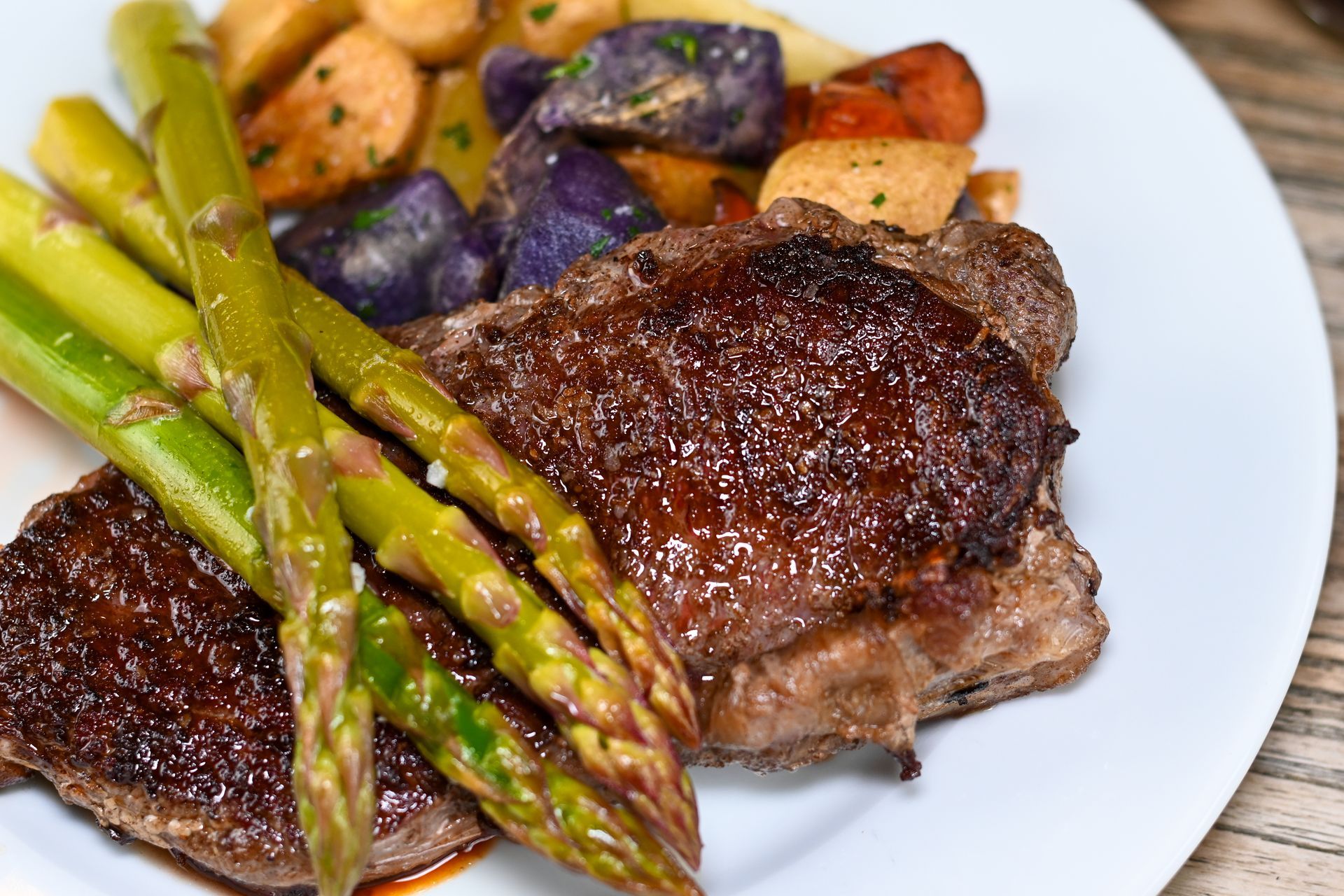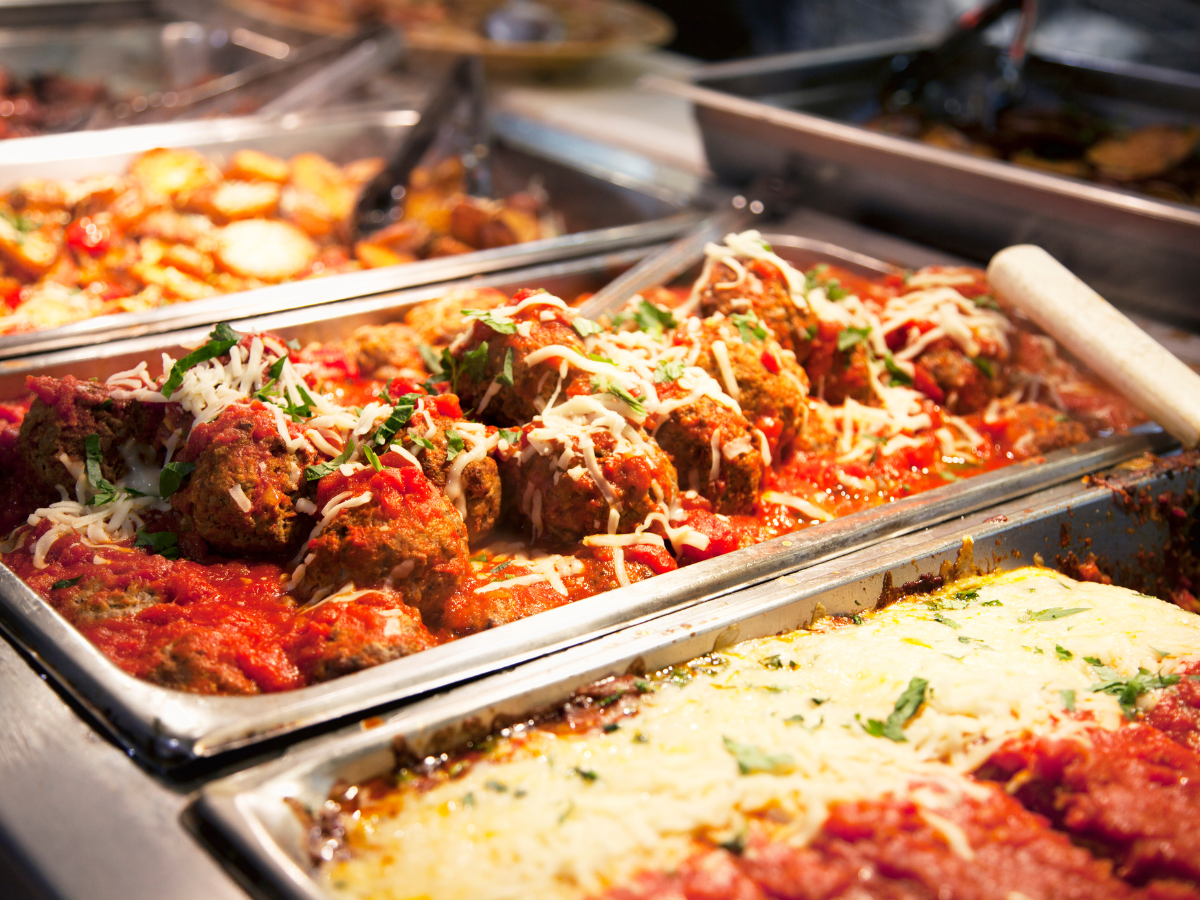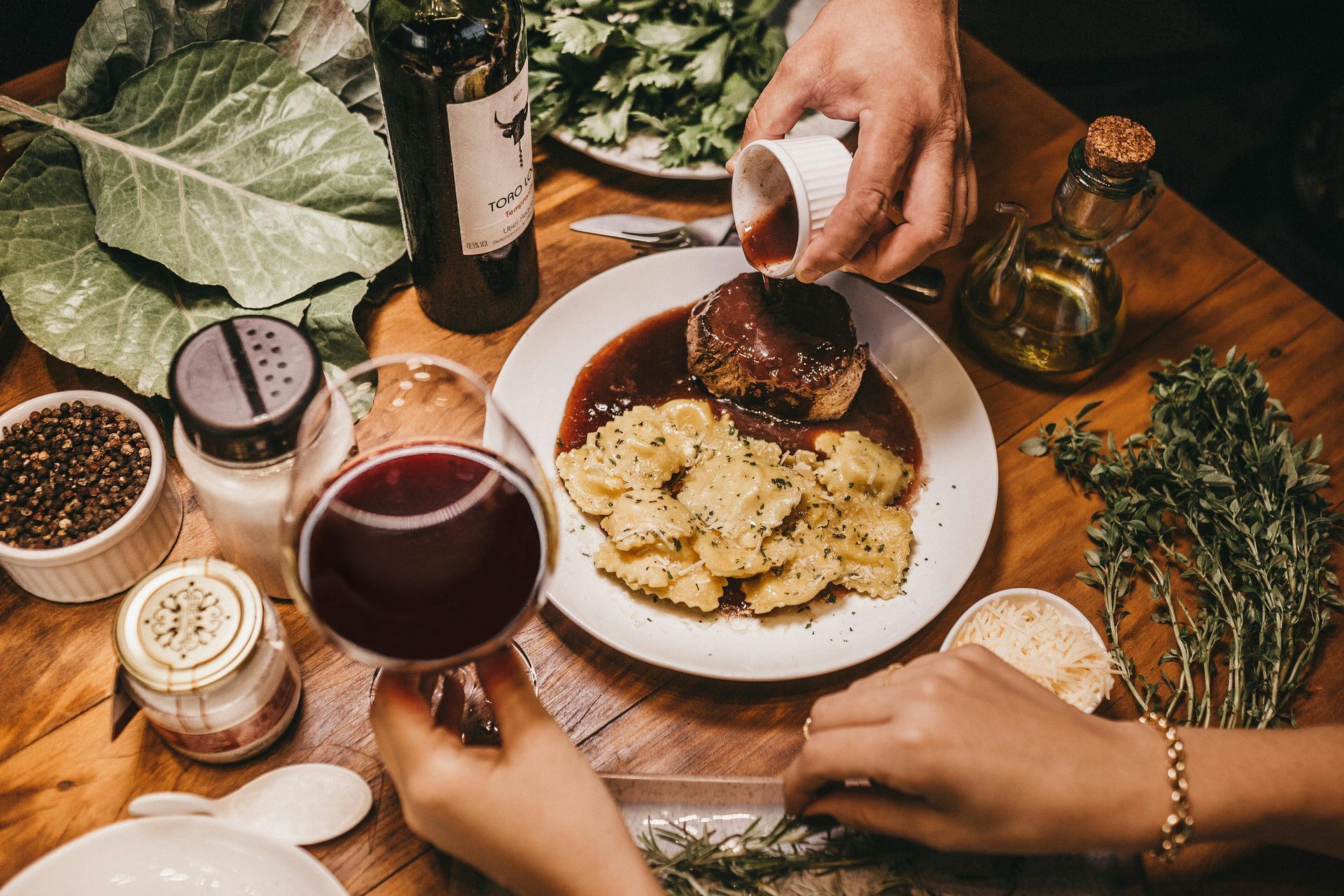Chef’s Tips: Cooking the Perfect Steak
Cooking the perfect steak is an art that requires precision, the right techniques, and a deep understanding of how heat and seasoning interact with meat. Whether you're preparing a steak for a special occasion or just a delicious dinner at home, achieving the perfect balance of tenderness, flavor, and juiciness can elevate your culinary skills. In this blog, we’ll share expert chef tips on how to cook the perfect steak, ensuring that every bite is flavorful and satisfying.
1. Choose the Right Cut of Steak
The first step to cooking the perfect steak is selecting the right cut. Different cuts offer different textures and flavors, so choosing the right one for your preferences is key.
- Ribeye: Known for its marbling and rich flavor, ribeye is a popular choice for those who enjoy a juicy, tender steak with lots of flavor.
- Filet Mignon: If you prefer a leaner, more tender cut, filet mignon is the perfect choice. It’s less fatty than ribeye, but still incredibly tender.
- New York Strip: For a balance of flavor and tenderness, the New York strip is a great option. It offers a robust flavor without being overly fatty.
- T-Bone: Combining the tenderness of filet mignon and the flavor of a ribeye, T-bone steaks are perfect for those who want the best of both worlds.
When selecting your steak, ensure it has a good amount of marbling (fat within the meat), as this fat will melt during cooking and keep the steak tender and flavorful.

2. Let the Steak Reach Room Temperature
Before cooking your steak, it’s essential to let it come to room temperature. Taking the steak out of the fridge 30-45 minutes before cooking allows it to cook more evenly, preventing the outside from overcooking while the inside remains undercooked.
This step is crucial for achieving the perfect steak texture. If the steak is too cold when placed on the grill or pan, it will cook unevenly, leading to a less than optimal result.
3. Seasoning is Key
While a great steak can stand on its own, seasoning is crucial to enhancing its natural flavors. The simplest and most effective seasoning is salt and freshly ground black pepper. Salt draws out the steak’s natural juices and helps develop a savory crust when seared. Pepper adds a touch of heat and flavor balance.
For added depth of flavor, you can experiment with herbs and spices such as garlic powder, thyme, or rosemary. Some chefs also recommend marinating the steak for several hours to infuse more flavors, but be cautious not to overpower the steak with too many strong spices.
4. Choose the Right Cooking Method
The method you use to cook your steak plays a significant role in its outcome. Here are the most popular cooking techniques for steak:
- Grilling: Grilling over high heat gives the steak a smoky flavor and crispy exterior. For a perfect grilled steak, preheat the grill to high heat, and use direct heat for searing the steak.
- Pan-Seared and Oven-Finished: For a restaurant-style steak, searing it in a hot pan and then finishing it in the oven is a foolproof method. Use a cast iron skillet for even heat distribution and sear the steak for 2-3 minutes on each side before transferring it to a preheated oven at 400°F to finish cooking.
- Sous Vide: For an incredibly tender steak, sous vide cooking involves sealing the steak in a bag and cooking it in a water bath at a precise temperature. This method ensures the steak is cooked to the exact level of doneness you desire, and it’s then seared to create a flavorful crust.
No matter your preferred method, make sure to monitor the steak closely to avoid overcooking.
5. Use a Meat Thermometer for Perfect Doneness
The best way to ensure your steak is cooked to your preferred level of doneness is by using a meat thermometer. Here's a guide for steak doneness temperatures:
- Rare: 120-125°F
- Medium Rare: 130-135°F
- Medium: 140-145°F
- Medium Well: 150-155°F
- Well Done: 160°F and above
Remember, the steak will continue to cook for a few minutes after you remove it from the heat source, so it’s a good idea to take it off the heat when it’s about 5°F below your target temperature.
6. Let the Steak Rest
After your steak has finished cooking, don’t rush to cut into it right away. Letting the steak rest for 5-10 minutes allows the juices to redistribute throughout the meat, making it more tender and flavorful. Resting is essential to avoid losing those flavorful juices that would otherwise run out when you cut into the steak.
7. Pair with Complementary Sides and Sauces
While the steak itself is the star of the show, pairing it with complementary sides and sauces can elevate the entire meal. Consider classic steak sides like mashed potatoes, grilled vegetables, or a fresh salad. If you prefer a sauce with your steak, options like béarnaise, chimichurri, or a simple garlic butter can add extra layers of flavor.
Conclusion
Cooking the perfect steak requires attention to detail, from selecting the right cut to knowing when to take it off the heat. With these chef’s tips, you can ensure that your steak is flavorful, tender, and cooked to perfection every time.
At Happy Hour Bar & Grill, we pride ourselves on serving perfectly cooked steaks that are sure to satisfy any meat lover. Whether you’re enjoying a meal with friends or celebrating a special occasion, our expertly prepared steaks are the highlight of any dining experience. Visit us today and taste the difference for yourself!










